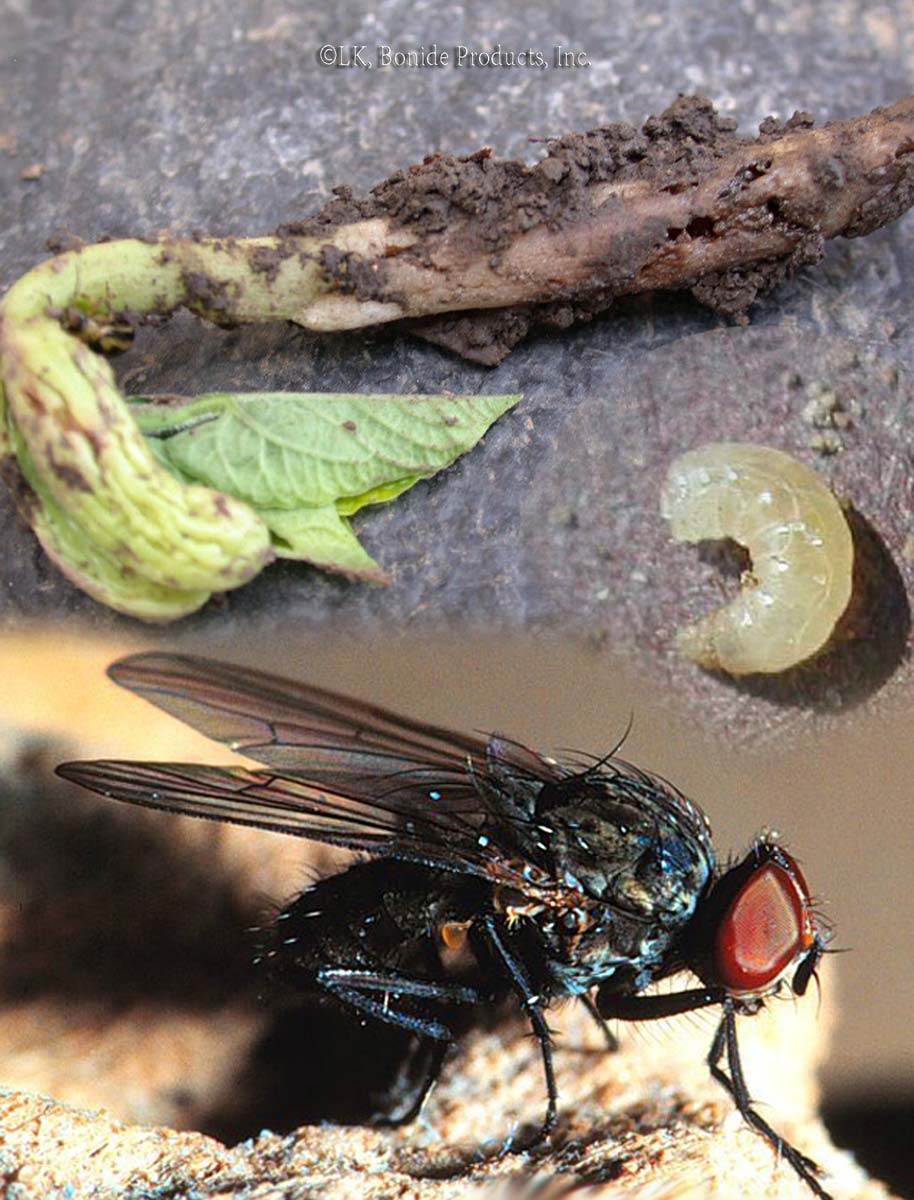
These pests thrive in cool, moist, highly organic soils. The several species include cabbage and onion maggots, found primarily in the northern United States, and the seed-corn maggot, a widespread pest which destroys germinating seeds. The adults of most species look like gray houseflies. The white, legless, burrowing maggots have a pointy head and a blunt rear.
Target: Root vegetables, cole crops, tomato-family crops, seeds.
Damage: Tunneling ruins seeds, seedlings, and edible plant parts. Plants are stunted and prone to wilting. Some maggots spread diseases as they feed. If potato eyes turn pink with excrement, your crop is infested.
Life cycle: Adult flies lay white eggs at the base of host plants or in cracks in the soil. After hatching, the maggots tunnel into plant parts to feed, then form brown pupae in roots or soil. There are several generations a year; in warm climates, the pests may be active the year around.
Notes: Do your best to prevent these pests from establishing themselves. Reduce soil moisture and organic content. Round or square tar paper collars, with a slit cut in the center to accommodate the seedling, deter flies from laying eggs.




